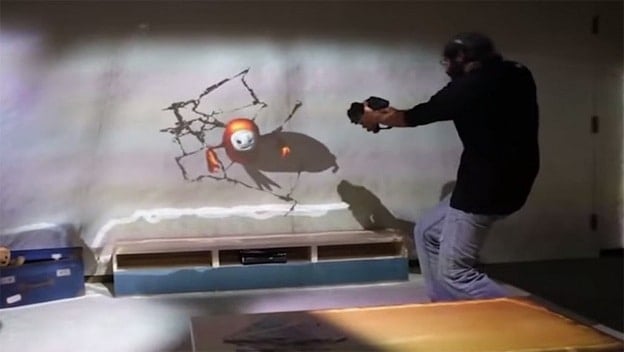2015 could mark an entirely new era in how we interact with our gaming worlds.
Did you own a Virtual Boy? Ever try one of those make-shift VR stands which popped up in malls all across America back in the ‘90s? It seemed virtual reality was the latest craze everyone was excited about. However, after experiencing the clunky polygons and headache inducing headsets for the first time, we soon realized the real reality (no pun intended) behind VR. Unfortunately, it was far from where it needed to be, and never quite garnered widespread appeal. It quickly died out, becoming nothing more than an after-thought. A simple speed bump along our technology highway that eventually led us to touchscreens and being “plugged-in” to unlimited data access on a 24/7 basis.
Fast forward two decades later, and it would appear history is repeating itself once again.
I give all the kudos possible to Mr. Palmer Luckey and the team behind the Oculus Rift. If not for their grass-roots campaign in getting their little dream off the ground, the renewed interest in making VR a viable option in the next-gen would likely not exist. From that sprang other innovations, such as Sony’s Morpheus Project. While it looks promising (and will provide a cross-over appeal with the console consumer base that the Oculus would have never reached), Sony is not our focus today. Instead, it’s their rival Microsoft (and more specifically their latest R&D venture known as RoomAlive).
Now I don’t need to rehash what a colossal blunder the Kinect has been, as a simple Google search can provide all the info you’ll need in that regard. Instead, I’d like to focus on the possibilities of what a fully immersive VR environment could mean to the future of gaming (divorced of ugly peripherals strapped to your face). I’ve certainly been an outspoken critic of Microsoft’s hardware snafus in the past, but credit where credit is due in this case. Their current prototype is taking the concept to a level far beyond the scope of what simple headsets can accomplish. I’m going to come right out and say it…Microsoft is essentially building the holodeck from Star Trek: The Next Generation (or the X-Men’s Danger Room if you prefer your references comic-themed). Now this is what I’m talking about! I love where their heads are at!
Take a look at the recent tech-demo posted to YouTube, showcasing how a series of projectors (in tandem with the Kinect’s motion-sensing technology) look to turn your living room itself into an interactive map.

I highly recommend you first watch the video embedded above, so you’ll have context for what I’m about to say next. And that is, I hate to admit, RoomAlive looks kind of shitty. Now some might suggest my default opinion is not to like ANYTHING Microsoft rolls-out, but that simply isn’t the case. Can you honestly view this footage and feel anything but douche-chills running down your arm (as these “volunteers” over-react in every place they were obviously instructed to do so)? The concept no-doubt reads awesome on paper, but execution is seemingly where it falls apart.
First off, the visuals are god-awful. Now I know this is only a demo, but come on people! It’s almost the year of the hoverboard! Nothing I’m seeing here screams anything immersive in nature. What it truly feels like is the back wall of a Spencer’s, where all the psychedelic lighting has the room lit up like Cheech and Chong’s wet dream. Not to mention the fact that no mainstream developer is going to sink precious production resources into this idea. When programming for the Rift or the Morpheus, they at least maintain control of their game’s overall design layout during the output phase. RoomAlive possess some many varying x-factors, such as misplaced furniture or awkward wall placement (not all rooms are four-square ya’ know), I can easily see how designing for Triple-A titles like Tomb Raider or Halo could become a real nightmare in juggling this kind of baggage.
I can also draw comparisons to several failed consoles of generations gone-by, like the Neo Geo, Atari Jaguar, 3DO and even the Sega CD. By the looks of things, you’ll not only need a Kinect, but also an entire network of overlapping projectors and cameras to make this work. If you do finally get everything up and running, the cost alone is likely to pigeon-hole it as a total “niche” item. Granted, they’ve got a long way to go in the development stages, and could possibly address some of these issues over time. I suppose my biggest question is, at this late stage in the game, do they really have that kind of time? Freshman year has not been pretty for the One, and the 11 th hour approaches. A big win is not only critical in the near future, it’s an absolute necessity. I was really banking on RoomAlive serving as a bit of a lifeboat for the struggling system, allowing Microsoft to at least compete in the VR market amongst its counterparts in some fashion.
Having seen it, I guess you could say my bubble has been burst a bit. Unfortunately, I’d call it another anchor rather than a lifeboat at this point. Once again…the momentum apparently stays with Sony.
